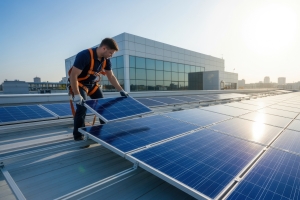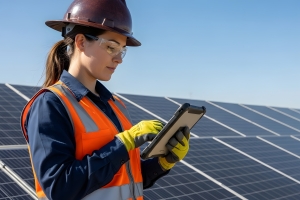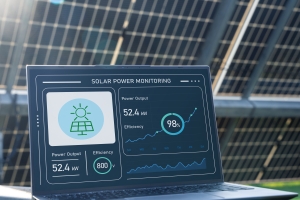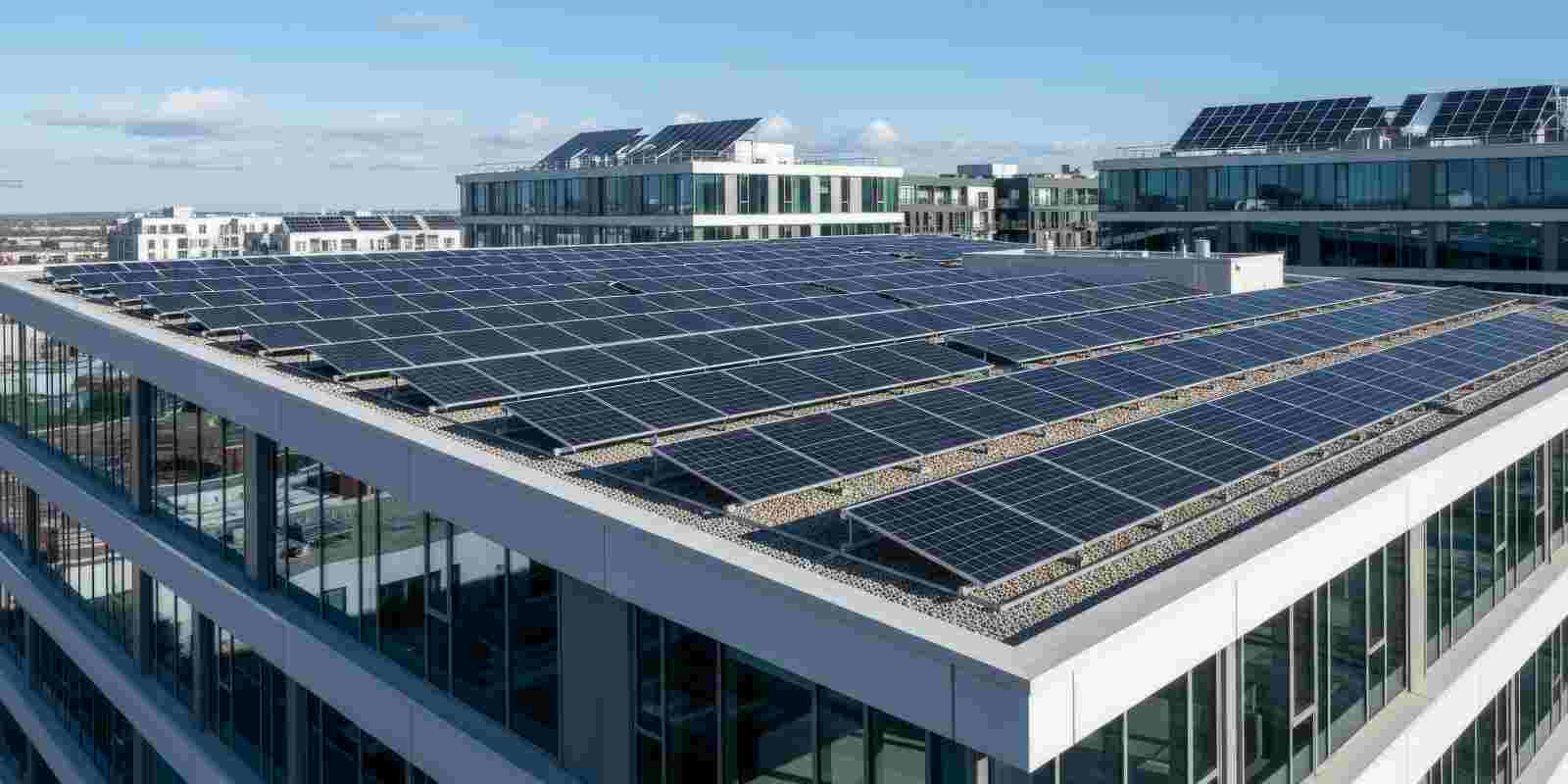
Solar installations are growing in demand among commercial installers due to a few factors, including rising costs of both on-grid electricity and solar arrays. That may seem counterintuitive, but as material and labor costs continue rising, coupled with inflation, many building owners strive to reap the benefits of solar energy before costs rise any further. As the Commercial Solar Tax Credit approaches its deadline for eligibility, time is of the essence when it comes to prepping and installing solar arrays in Maryland buildings.
This article walks through the step-by-step process of prepping a building in Maryland for a new solar installation. Solar installations can provide many benefits when properly installed. Although the costs associated with installing and maintaining solar arrays continue to rise, these steps can provide necessary risk management strategies to help building owners get the most from their investments.
What are the Benefits of a Commercial Solar Installation?
Properly installed solar arrays can offer building owners many benefits, including lower energy costs. Solar power resists cost inflation associated with conventional electricity generation, including power grid infrastructure costs and rising labor costs. Through net metering, power generated by the building’s solar array can be credited back to the owner to offset potentially higher energy costs during periods of high demand.
Building owners can achieve higher cost predictability with solar power by avoiding these costs, freeing resources for more important purposes. As conventional electricity costs continue to climb, including planned price hikes by major utility providers, properly assessing buildings for solar viability will help property owners lock in solar energy savings, protect their buildings from market volatility, and invest in clean energy for their business’s future.
How to Prepare for Solar Installations Step-by-Step
Building owners in Maryland can follow this brief step-by-step guide to prep their properties for new solar installations:
Assess Potential Solar Benefits
Before beginning the installation process, building owners should consider whether solar power would provide significant benefits. Essential variables to consider include the size of the building, the orientation of its roof, sunlight coverage, the structural integrity and age of the building, and possible alternatives.
Conduct an Energy Analysis

An energy analysis or audit from a local solar provider can help identify the cost and benefits of installing solar power in the building. An energy audit first assesses the building’s current energy usage and then examines opportunities for greater efficiency based on solar arrays of different sizes.
Review Solar Tax Incentives
The federal Commercial Solar Tax Credit, which can help businesses recoup up to 30% of their installation costs, is being phased out by the Big Beautiful Bill. To apply before that happens, the solar array must have started construction by July 4, 2026 or be completely installed by December 31, 2027. While residential buildings are already at the end of their eligibility, commercial installations still have time to meet their deadline for the tax credit, including their permit and zoning requirements.
Prepare Infrastructure for Installation
Before installing a solar array, building owners should inspect their roof, conduct needed repairs, and reinforce the structure to handle the load of the new solar equipment.
Choose a Local Solar Installer
Choosing a local solar installer is an important step, and should include asking questions about their experience with local permits and codes, warranty information, maintenance schedules, and costs. Always compare multiple quotes and financing options before signing with a provider.
Plan the Logistics of Installation
Working with their local solar installer, building owners should set a timeline for their solar installation project and plan their operations accordingly. For example, work crews and equipment may need special access to parts of the building. Additionally, installing the array may disrupt the normal operations of the business.
Proper preparations should be made to make the transition seamless, including notifying staff, preparing entrances, moving certain items into storage, preparing building security, and anything else that may be needed, depending on the situation.
Prepare for Approval and Monitoring

Even after the array has been installed, the building owner must follow the inspection and approval process for their area, including connecting to the grid and activating net metering. The system will continue to be monitored for usage and performance. Speak with your provider to prepare for the inspection and approval process to set up your array with the appropriate authorities.
Connect With Local Solar Installers to Customize Solar Savings in Maryland
Solar installations provide peace of mind for building owners as they confront rising utility costs in Maryland, including inflationary market changes and planned rate hikes by major providers. Properly prepped buildings can utilize the many advantages of solar power, and the sooner building owners recognize their property’s needs, the more easily they can take advantage of these benefits.
At Energy Select, our experienced solar installers help building owners prioritize their installation process based on their needs. Our team will conduct an energy analysis and provide an instant estimate. Contact us today to learn how your building could benefit from a solar installation and how our team can help you get started.
*The information in this article is intended for the purpose of general advice. For specific information about individual tax situations, consult a qualified tax professional.


